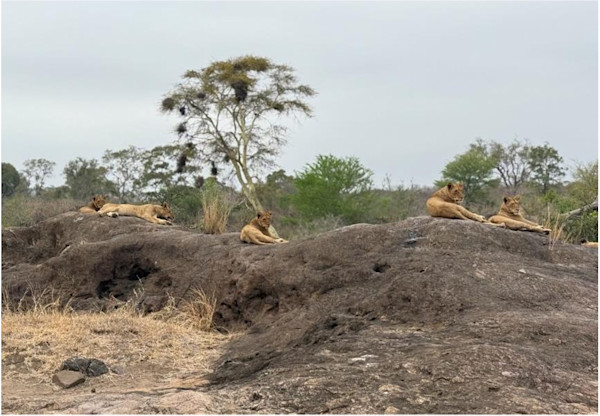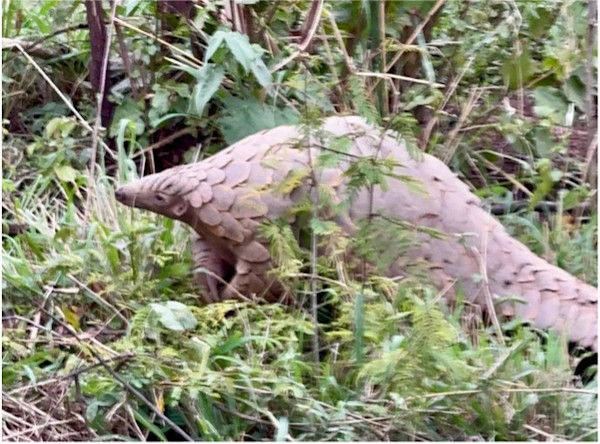
February 2021
Biodiversity
Anti Poaching Unit at Singita Sabi Sand makes strides
in BiodiversityShare:
Anti Poaching Unit at Singita Sabi Sand makes strides
Singita, alongside its conservation partners across Africa, has an overarching mission to further projects that protect and preserve wildlife and pristine wilderness areas. This is a complex system of initiatives run tirelessly behind the scenes, to safeguard the land and all the life within its borders.
The Singita Lowveld Trust, our non-profit conservation partner in South Africa, is responsible for the implementation of all biodiversity, community and sustainability projects within Singita Sabi Sand. The Sabi Sand Wildtuin is an open reserve system connected to the Kruger National Park, an area renowned for an abundance of species, including rhino, making it a target for poaching syndicates. Therefore, in this region a core focus is on its dedicated and highly trained anti-poaching and K9 (dog) unit, which is tasked with ensuring the safety of the wildlife under its care.

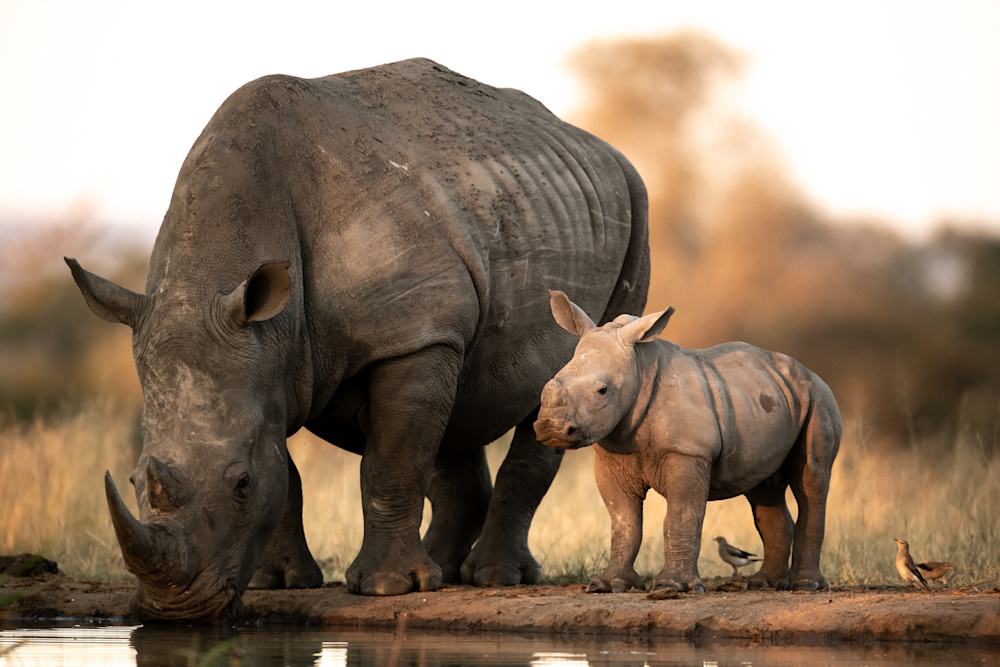
Singita's Anti Poaching Unit works tirelessly to preserve and protect endangered species
Since first ringing alarm bells in 2008, the rhino poaching crisis across Africa has continued to escalate, becoming one of the most urgent conservation issues of the 21st century. At Singita, we believe that resolving this enigmatic challenge requires a tiered approach. In the long term, reducing the demand for rhino horn is essential to the ultimate survival of the species. In the medium term, this entails ensuring that neighbouring communities derive real benefits from these wildlife areas through the success of ecotourism enterprises and inclusion in the ecotourism procurement and local supply chains. Supporting communities to prosper socially and economically alongside these protected areas is critical, as they are the key custodians of, and dependants on these living resources. And in the short term, the vigilant protection on the ground of wildlife is necessary to safeguard the remaining population and support growth at a time when endangered species, such as rhino, are being decimated by escalating poaching efforts.

Teams on the ground patrol the reserve daily, safeguarding the wildlife within its borders
2020: A year of challenges
The hardships brought about by COVID-19 in 2020 exacerbated the already challenging task facing the based in the Sabi Sand. While the initial hard lockdowns in South Africa early in the year saw a decrease in poaching activity due to restricted travel, closed borders and ports, night curfews, and increased visible law enforcement, the end of hard lockdown prompted a new surge of incursions. A reduction in operational budgets (a knock-on effect of the loss of tourism revenue) combined with a spike in post-lockdown poaching incidents, means that the APU is facing a greater challenge than ever before.
This constant pressure however, has gone towards galvanising an elite team of field rangers and trackers, well versed in poaching tactics, which is constantly and fluidly adapting to the volatile situation. These highly skilled units are trained in fitness, bushcraft, tracking, communication, weapon handling, first aid, combat and arrest procedures and the use of night gear and dog handling in order to equip them to navigate the ever-shifting challenges of locating, apprehending and deterring would-be poachers.
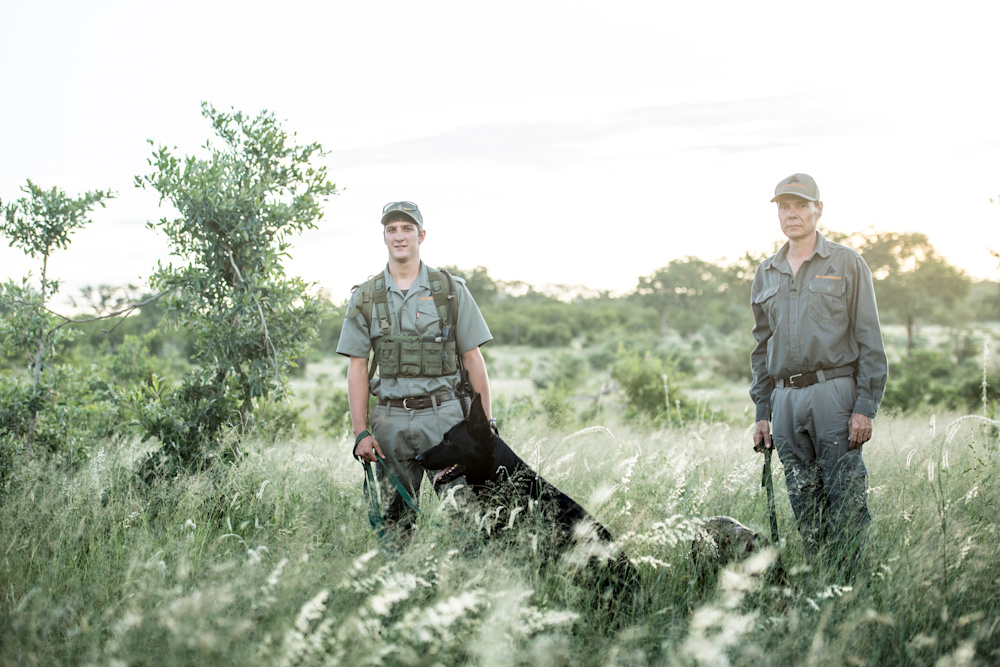
The highly skilled units are trained in fitness, bushcraft, tracking, communication, weapon handling, first aid, combat and arrest procedures
Not only do the APU teams have to go through rigorous training, but they, along with their dogs, must withstand extreme weather conditions – operating long hours on foot in extreme heat and humidity, and risk dangerous animal encounters and armed poachers in their efforts to protect the reserve’s endangered wildlife.
Great strides
Despite the challenges facing them, the APU based in Singita Sabi Sand has achieved immense success, and although the work is ongoing while the threat of poaching remains ever constant, there are victories to celebrate. ‘We haven’t lost a single rhino in our area of responsibility in the last five years,’ says the Managing Partner of the APU operation at Singita Sabi Sand.

Aside from their exceptional tracking ability, the K9 Unit dogs’ presence alone has proved a powerful deterrent
This is in part due to the innovative and inspiring teamwork of the K9 unit. Given the level of threat and our commitment to protecting our rhino, Singita took the decision in 2012 to bolster its anti-poaching offensive with the addition of a specialized K9 unit made up of tracking dogs and their dedicated handlers who patrol the extensive area within the reserve 24 hours a day, throughout the year. Aside from their exceptional capability for tracking and scenting, the dogs’ presence alone has proved a powerful deterring force – once tracking dogs are deployed in an area, the word quickly spreads among criminal syndicates, resulting in a reduction in activity.
This constant vigilance and increased mobility, as the dogs are able to cover ground rapidly, has seen remarkable results, with the frequency of poaching incidents dropping dramatically. ‘The establishment of the K9 unit was a significant milestone and has contributed a vital additional layer of deterrent and effectiveness to our remarkable APU teams,’ says Inge Kotze, Singita’s Conservation GM.

With support from its conservation partners, the Anti Poaching Unit is constantly seeking ways to improve its efficacy and response times
In pursuit of excellence
The multifaceted team is constantly seeking ways to improve its efficacy, which is greatly enhanced by support from its conservation partners. Additional aid in the form of the replacement of an All-Terrain Vehicle (ATV) by the Singita Lowveld Trust has increased mobility and improved the unpredictability of the Section Ranger’s presence across the Singita Kruger National Park concession, also allowing for the dogs to be rapidly moved along the tracks, picked up and swapped out when they tire.
‘This has hugely improved their response time, and allowed for rapid mobilisation and response across the concession and has shown to be successful in deterring incursions,’ says Kotze.
‘This has hugely improved their response time, and allowed for rapid mobilisation and response across the concession and has shown to be successful in deterring incursions,’ says Kotze.
This, in addition to state-of-the-art technology, such as fence-line detection and surveillance, and advanced night gear technology – which ensures teams don’t need to wait until daylight to pick up tracks and mount a tracking response team – has allowed the teams to launch an even greater offensive against poaching attempts. ‘The night gear allows us to make use of the cover of darkness just as effectively as the poachers do, giving us a significant advantage,’ adds Kotze.
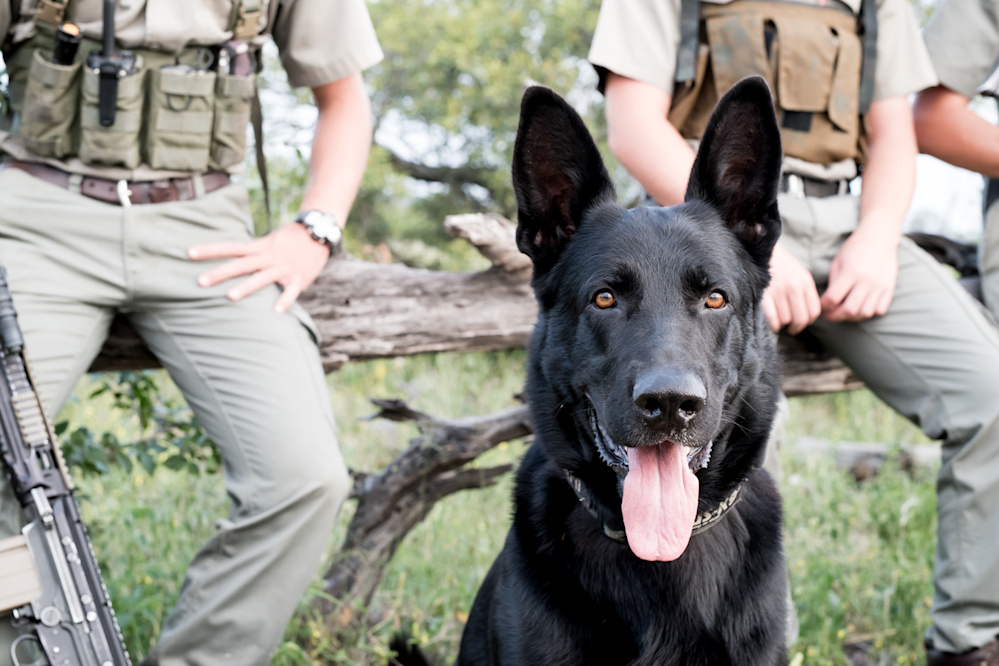
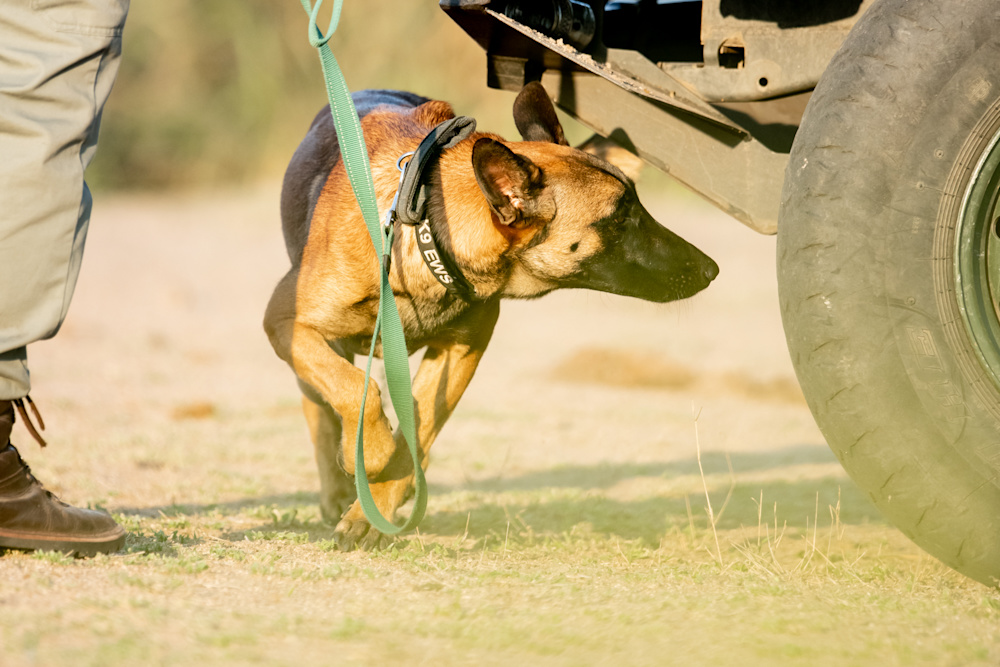
Anti-poaching efforts require constant vigilance and a fluid approach, as poachers regularly change tactics
The work is ongoing however. ‘The lack of poaching incidents in our areas is testament to the immense dedication and commitment of the APU teams, during a time of increasing pressure. However, this increase in poaching requires heightened vigilance and further effort, as poachers regularly change tactics. And as the number of rhinos in the high density areas of Southern Kruger decrease due to poaching our areas will be increasingly targeted,’ says Kotze.
It therefore remains critical for APU to stay one step ahead of the ever-evolving strategies used by poachers. This demands a multipronged approach – a combination of intelligence and early warning systems, innovative monitoring, K9 teams and additional airwing support for increased mobility and faster reaction times, as well as boots on the ground to assert a visible presence. This in turn relies on funding and the valued championing of our causes by Singita’s supporters – the high-level skills and capabilities needed by both dogs and trackers necessitates intensive training, which takes time and resources.
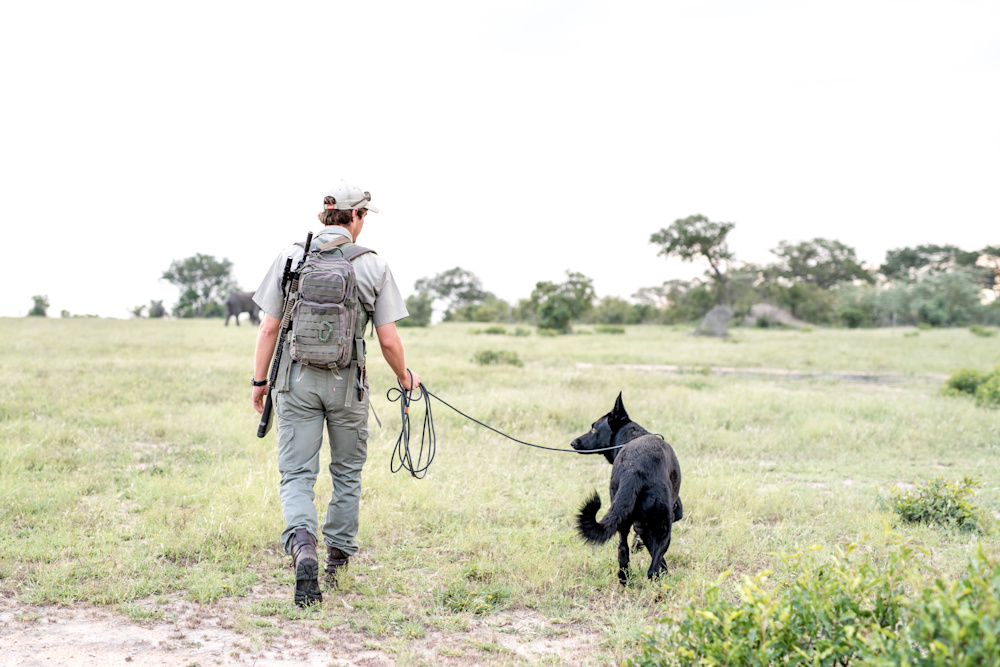
The lack of poaching incidents in our areas is testament to the immense dedication and commitment of the APU teams, during a time of increasing pressure
How you can offer support
Learn about this incredible canine-and-human team and how you can contribute to saving South Africa’s precious remaining rhinos.
